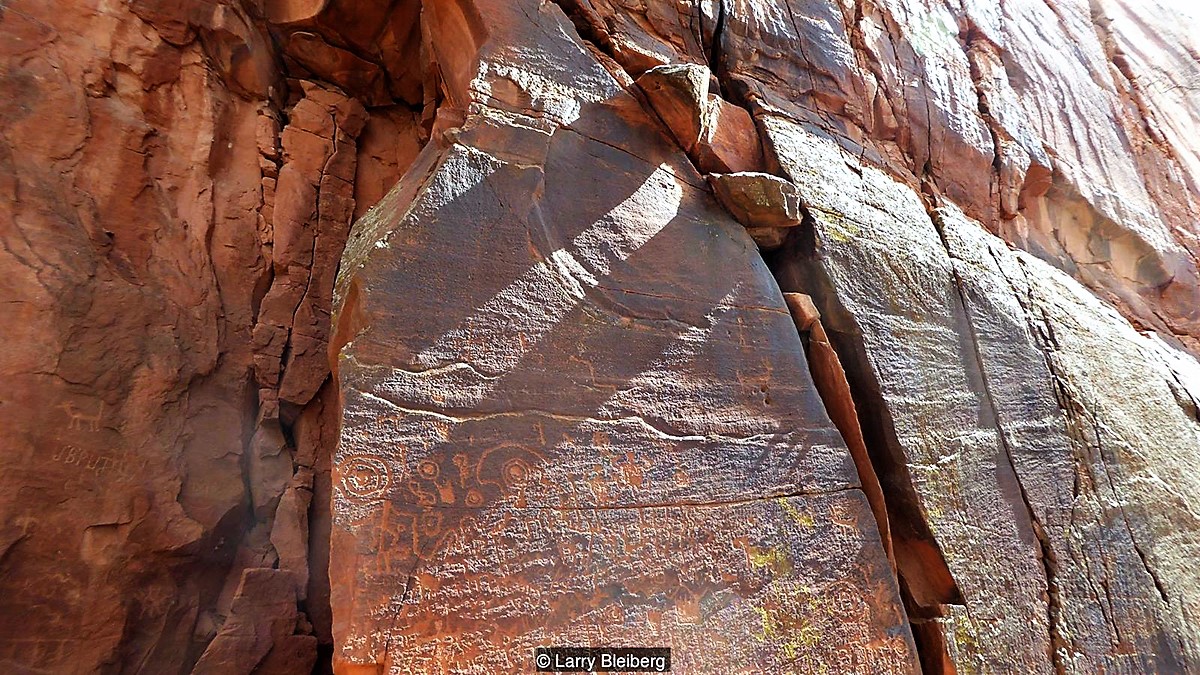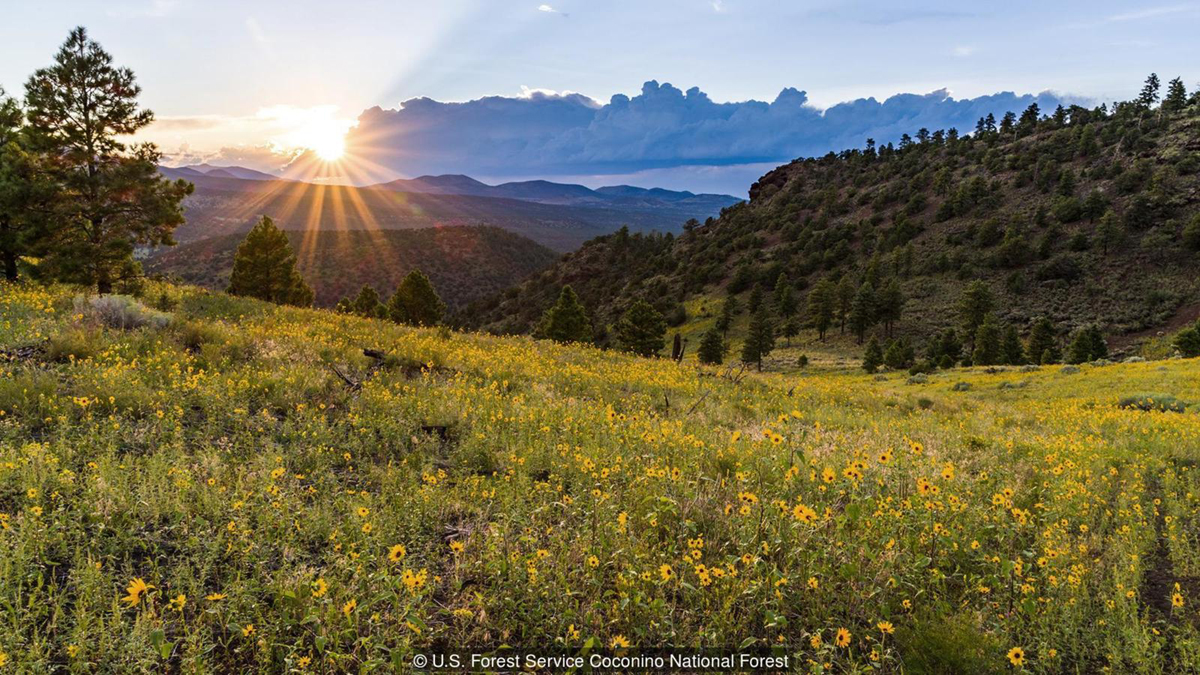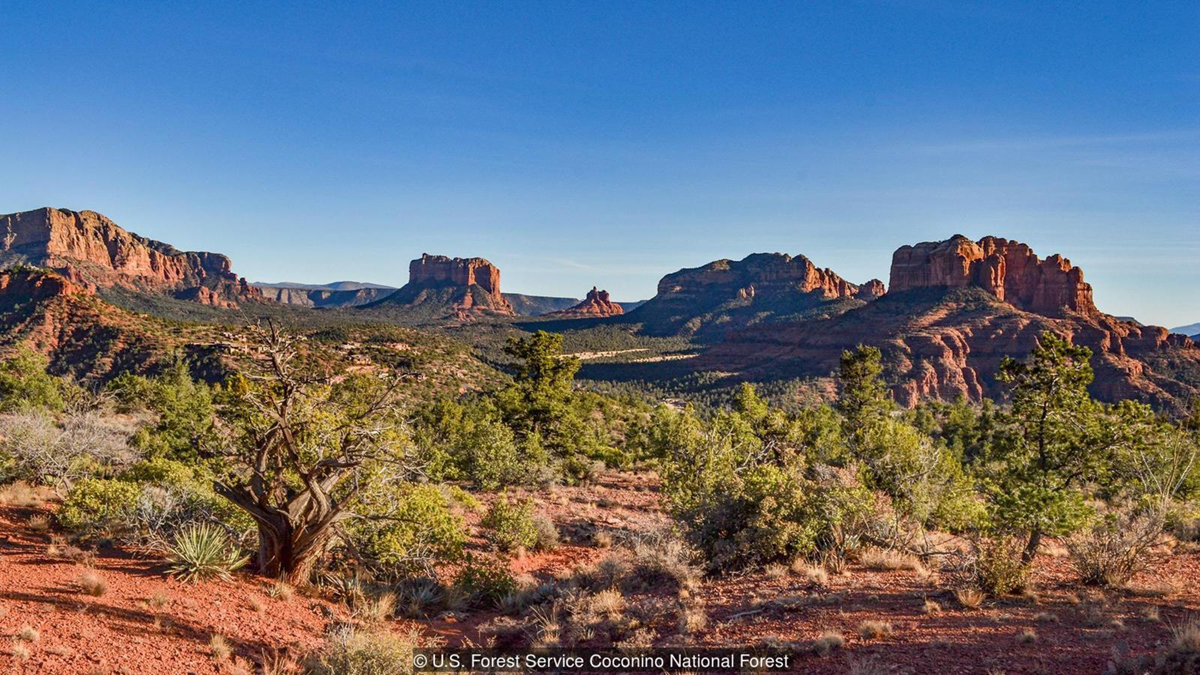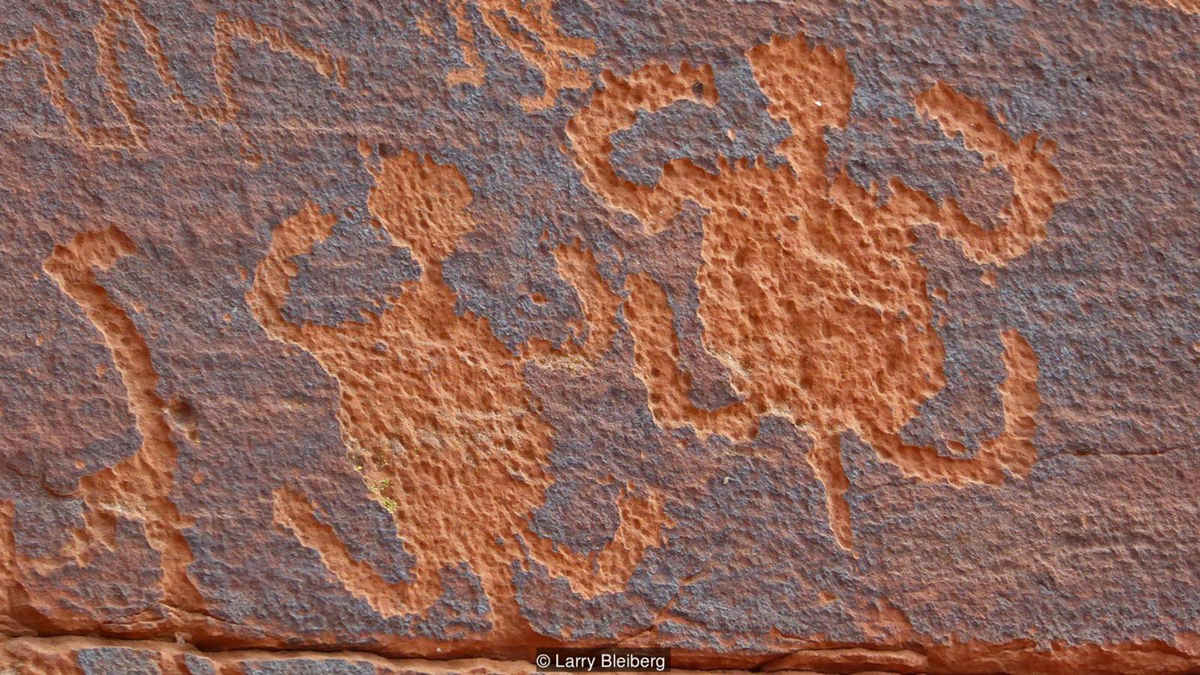


An article by Larry Bleiberg on bbc.com/travel - Arizona's mysterious clock of ancient times - reports on a rock art calendar in Arizona which marks the passing of the seasons.

Petroglyphs in Arizona’s Coconino National Forest were carved to track the passage of time. Image: Larry Bleiberg.
At the Coconino National Forest near Sedona, Arizona, Kenneth Zoll points out the petroglyphs at the V Bar V historical ranch site that were carved nearly a millennium ago; carvings of snakes, coyote and deer, as well as several concentric circles. There are over 1,000 petroglyphs. He also points out the two rocks wedged into a crack. He claims this was a way to track time. On this day the shadows projected across the panel indicated the season of Spring.
Rock art calendar in Arizona marks the passing of the seasonshttps://t.co/DG1GshNbb9 #archaeology #Sinagua pic.twitter.com/Wyp9Wrqt2w
— Bradshaw Foundation (@BradshawFND) May 22, 2018
Kenneth Zoll kept careful records of how the sun and the shadows fell over the petroglyphs of the V Bar V historical ranch site. Image: Larry Bleiberg.
According to Zoll, this would be happening at archaeological sites around the world. On the vernal equinox, ancient ruins were aligning with the sun and silently marking the changing season. His interest in the forest's V Bar V historical ranch site began in 2005. For several years he observed sun interacting with the art, believing it was agriculture that likely inspired the so-called imaging calendar.

Zoll believes the Sunagua people created the calendar to mark religious ceremonies and track their crops' growing seasons. Image: U.S. Forest Service Coconino National Forest.
The Sinagua people, who researchers believe lived and farmed here between the 7th and 15th Centuries, grew corn, cotton, squash and beans. Their descendants, the Hopi people, now live about 150 miles away.
When Zoll spoke to the Hopi, he learned that the panel appeared to mark religious celebrations and important dates for farmers. On 21 April, a day associated with the first planting, a shadow's bottom edge touches a carving resembling a corn stalk. One of the most compelling findings comes on 8 July, the end of a 16-day Hopi period of prayer and meditation. On that day, the sun perfectly outlines a figure that appears to be dancing.
Hopi elder Floyd Lomakuyvaya, 65, said that some of the petroglyphs are the familiar symbols of tribal clans. "I feel proud because our ancestors left these marks. Every month we have different ceremonies, and different things happen. That's our calendar. It guides us."

More than 30 other petroglyph examples believed to be ancient rock calendars have been found in central Arizona. Image: U.S. Forest Service Coconino National Forest.
Zoll has documented a dozen sites in the Verde Valley area of central Arizona that are likely to be calendars, and more than 30 others have been found in the region around the city of Phoenix. Most have rock art with concentric circles, which appear to align with shadows at specific times of year.

Turtles are a symbol of the Hopi Water Clan, who still hold the honourable position of sun watchers. Image: Larry Bleiberg.
Researchers have also discovered several observation sites in the area that appear to have been used by sun watchers, tribal members who were tasked with observing the daily rise and setting of the sun. It's a position of honour that still exists in Hopi communities, where members of the Water Clan attend to that duty. Indeed, turtles, which are their clan symbol, appear to be carved above the V Bar V rock.
Dordogne's natural calendar in the sky:
http://www.bradshawfoundation.com/news/archaeology.php?id=Dordogne-s-natural-calendar-in-the-sky
Read the full article:
http://www.bbc.com/travel/story/20180516-arizonas-mysterious-clock-of-ancient-times
by Bradshaw Foundation
Monday 03 February 2025
by Bradshaw Foundation
Friday 09 August 2024
by Bradshaw Foundation
Wednesday 24 July 2024
by Bradshaw Foundation
Thursday 04 July 2024
by Bradshaw Foundation
Monday 01 July 2024
by Bradshaw Foundation
Wednesday 20 March 2024
by Bradshaw Foundation
Tuesday 13 February 2024
by Bradshaw Foundation
Tuesday 13 February 2024
by Bradshaw Foundation
Thursday 01 February 2024
by Bradshaw Foundation
Tuesday 28 November 2023
by Bradshaw Foundation
Thursday 23 November 2023
by Bradshaw Foundation
Monday 20 November 2023
by Bradshaw Foundation
Tuesday 31 October 2023
by Bradshaw Foundation
Thursday 26 October 2023
by Bradshaw Foundation
Wednesday 20 September 2023
by Bradshaw Foundation
Monday 17 July 2023
by Bradshaw Foundation
Monday 03 February 2025
by Bradshaw Foundation
Friday 09 August 2024
by Bradshaw Foundation
Wednesday 24 July 2024
by Bradshaw Foundation
Thursday 04 July 2024
by Bradshaw Foundation
Monday 01 July 2024
by Bradshaw Foundation
Wednesday 20 March 2024
by Bradshaw Foundation
Tuesday 13 February 2024
by Bradshaw Foundation
Tuesday 13 February 2024
by Bradshaw Foundation
Thursday 01 February 2024
by Bradshaw Foundation
Tuesday 28 November 2023
by Bradshaw Foundation
Thursday 23 November 2023
by Bradshaw Foundation
Monday 20 November 2023
by Bradshaw Foundation
Tuesday 31 October 2023
by Bradshaw Foundation
Thursday 26 October 2023
by Bradshaw Foundation
Wednesday 20 September 2023
by Bradshaw Foundation
Monday 17 July 2023
Friend of the Foundation











